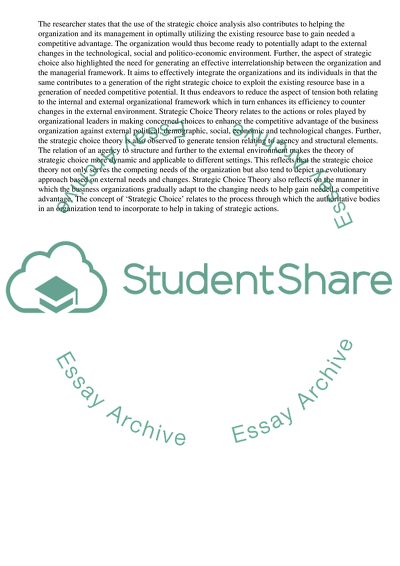Cite this document
(“Assumptions and Contribution of the Strategic Choice Theory Essay”, n.d.)
Assumptions and Contribution of the Strategic Choice Theory Essay. Retrieved from https://studentshare.org/management/1671221-critically-evaluate-the-assumptions-and-contribution-that-strategic-choice-theory-has-made-to-management-and-organisation-studies-use-examples-where-appropriate
Assumptions and Contribution of the Strategic Choice Theory Essay. Retrieved from https://studentshare.org/management/1671221-critically-evaluate-the-assumptions-and-contribution-that-strategic-choice-theory-has-made-to-management-and-organisation-studies-use-examples-where-appropriate
(Assumptions and Contribution of the Strategic Choice Theory Essay)
Assumptions and Contribution of the Strategic Choice Theory Essay. https://studentshare.org/management/1671221-critically-evaluate-the-assumptions-and-contribution-that-strategic-choice-theory-has-made-to-management-and-organisation-studies-use-examples-where-appropriate.
Assumptions and Contribution of the Strategic Choice Theory Essay. https://studentshare.org/management/1671221-critically-evaluate-the-assumptions-and-contribution-that-strategic-choice-theory-has-made-to-management-and-organisation-studies-use-examples-where-appropriate.
“Assumptions and Contribution of the Strategic Choice Theory Essay”, n.d. https://studentshare.org/management/1671221-critically-evaluate-the-assumptions-and-contribution-that-strategic-choice-theory-has-made-to-management-and-organisation-studies-use-examples-where-appropriate.


